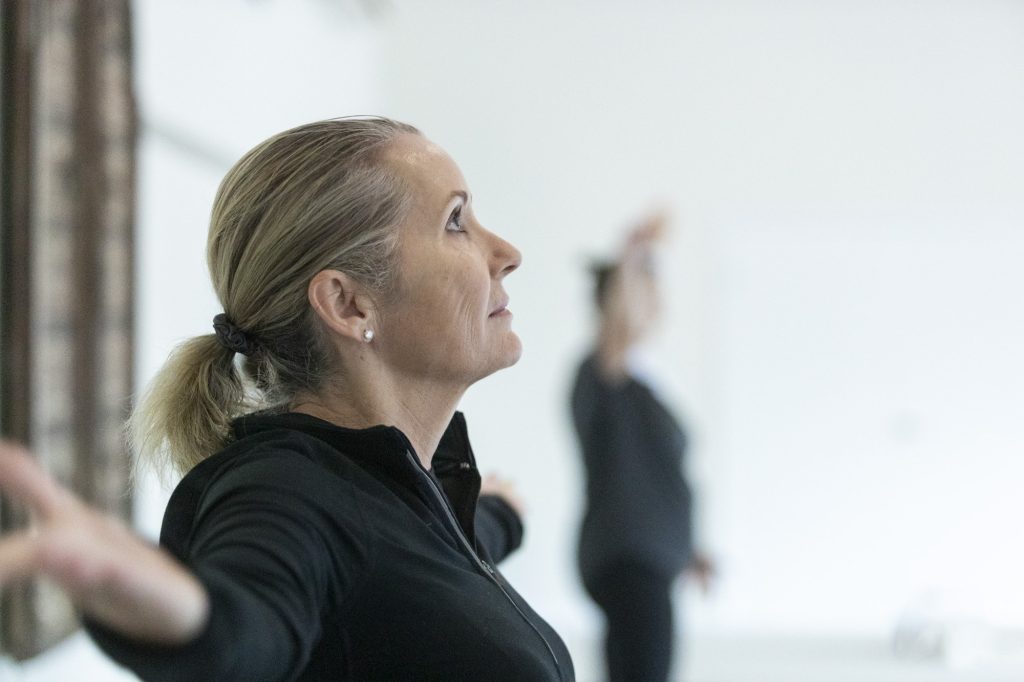It is more important than ever to remain conscious of our mental wellbeing and purposefully implement routines and rituals that help us achieve or maintain a balanced mental state. However, a valuable tool that can be easily overlooked is our breathing techniques and the powerful link these have to our mental state.
In the article below, our wonderful Yoga Instructor Lauren Kelly explains this connection and how we can harness our breathing in our everyday lives to benefit our physical, mental and emotional bodies.
About Lauren
Lauren Kelly has always had a passion for yoga and its theory, movements and psychology. She believes that yoga offers a pathway for people of all ages to connect deeply with themselves, guiding them on their own journey of empowerment, happiness and peace.

The physiological link between your breathing and your mental state
Breathing is an automatic response and a process we take for granted, yet it is so vital for our existence. How we breathe impacts our autonomic nervous system and affects our essential bodily process. When was the last time you checked in with your breath? Take the time now to gently observe your breath for a few moments without the need to control it. Is your breath shallow, tight, constricted and armoured? Or is it open and expansive and deep and free-flowing? Or perhaps a mix of the two at different times?
When we take the time to pause, slow down and take a deep breath, we voluntarily regulate our nervous system. A deep breath lowers our heart rate, regulates blood pressure and helps us to relax, which assists in decreasing the amount of cortisol (stress hormone) released into our body.
Breath is an invisible link between the mind and body. Have you noticed a correlation between the quality of your thoughts and the rhythm of your breath? Our state of mind is reflected in the way we breathe. An active mind fuelled by stress keeps our immune system from working at its full capacity. According to Vedic sages, the mind can be in one of five states at any time, ranging from the deeply troubled mind (least desirable) to the completely mastered mind.
When our mind is deeply agitated or scattered, our breath becomes erratic (Kshipta).
When our mind is dull or lethargic, the breath is shallow (Mudha).
If the mind is partially focused, the breath alternates between scattered and calm (Vikshipta).
When the mind is one-pointed and calm, the breath is deep (Ekagra).
The ultimate freedom is when the calm mind is in heightened awareness, that is, when the inspiration and expiration merge (Niruddha).
Every cell in our body needs oxygen to function efficiently, so it’s no surprise that a regular practice of controlled breathing can decrease the effects of stress on the body and increase overall physical and mental health.
Breath control (‘Pranayama’ in Sanskrit) is an essential element of yoga and is the fourth limb of the eightfold path to well-being. ‘Prana’ is a Sanskrit word for ‘life force’, or the energy that sustains us. ‘Ayama’ refers to control or expansion. Pranayama, therefore, is the extension of vital energy through breath control.
Pranayama is referred to as a practice because it may take time to develop a relaxed relationship with your breath. The intention is to develop our capacity for moving the breath intentionally, fluidly, and yet without tension or struggle.
In yoga, Pranayama functions as a self-soothing technique, enabling us to respond to daily stressors more flexibly. Slow pranayama breathing techniques reset the nervous system and activate the parasympathetic nervous system, shifting us from a heightened state of arousal (‘fight or flight’) to a restorative state (‘rest and digest’). Through the practice of pranayama, we can voluntarily control our breath, reduce our stress levels and ultimately lead us to a deep sense of peace. If you have felt a sense of calm after a deep breath, then you have accessed the essence of peace from within.

The difference between chest and abdominal breathing. Which is best?
The way we take in our breath is the way that we take in our life. Have you ever noticed how soothing a deep sigh can be at the end of the day? When we breathe through the nose, deep down into the belly and the lower lungs, we are activating the nerve receptors in the lower parts of the lungs that then activate the ‘parasympathetic nervous response’. This is also known as your relaxation response.
Conversely, have you noticed how fast and shallow your breath can be when you are in a state of panic? When we breathe through the mouth, shallowly and into the chest, we are activating the ‘sympathetic nervous response’ in the body. This is also known as your stress response.
In our busy lives, it is not uncommon to breathe quite shallowly throughout the day and only use a small proportion of our lungs. This means we are generally functioning at a low-grade stress response just from our daily living; so the nervous system is already under stress and duress. This does not do us any favours. We can become accustomed to an unhealthy pattern of initiating the breath from the chest and we operate a heightened state of arousal. This form of shallow breathing can agitate our minds and we may even overuse the muscles in the neck and upper body. Add to this tight, shallow and constricted breathing. The result? You’ve got yourself a recipe for disaster for your physical, mental and emotional state of being.
A growing number of scientific studies have revealed that diaphragmatic breathing (deep breathing) triggers body relaxation responses. Deep breathing is an effective non-pharmacological intervention for emotion enhancement, reducing anxiety, depression and stress.
How to manage negative emotions through optimal breathing techniques
The way we breathe can have an energetic effect on us – physically, emotionally and mentally – as we move throughout the day. Have you noticed the rhythm of your breath when you feel anxious or angry? Most likely, your breath becomes shallow and constricted, linked to erratic and negative thoughts, not to mention the physiological impact on the body: sweaty palms, muscles contracting and heartbeat racing. This is not a pleasant state to be in! We can become stuck in a downward spiral of negativity when we are caught up in low-frequency emotions of anxiety or anger and it can be difficult to move out of this state if we don’t shift our attention.
By mindfully redirecting our awareness to our breath, coupled with choosing positive thoughts (mantras or affirmations), we can assist in bringing ourselves back to harmony in mind and body. Slow, deep breathing brings a sense of ease to the body and the mind. When our internal landscape is at ease, a sense of peace can be reflected into our external world.
Breathwork at Eden
The foundation of yoga sessions at Eden combines the elements of physical poses (asanas) with controlled breathing techniques and moments for relaxation and meditation.
Before the session closes with a sound bath, I invite clients to have a scan of their inner landscape to notice how they feel. It is wonderful to receive feedback from clients expressing gratitude for the deep feelings of peace cultivated during the session. People look and feel lighter than when they first arrived, as though a weight has been lifted. Emotions are felt, tears of joy have been released as people deeply connect with themselves and open up on their journey. As people begin to explore their breath and open up their bodies, tension dissipates and new energy is cultivated. Areas in the body that may have initially felt tight now begin to feel more open and receptive.

The connection to self can be quite profound as you connect to your physical, emotional, spiritual and energetic bodies. Yoga allows you to find an inner peace that is not disturbed by the challenges of life. It would be an honour and pleasure to share this experience with you at Eden. We look forward to welcoming you!





